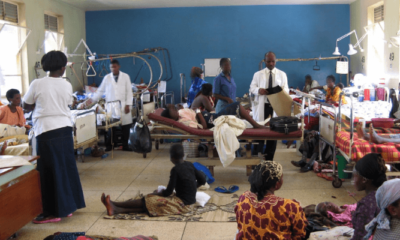News
Breast Cancer Symptoms: Warning Signals You Shouldn’t Ignore

When it comes to breast cancer, early detection is key. Recognizing the warning signs and seeking medical attention promptly can make all the difference in your treatment and prognosis.
While not all symptoms are indicative of breast cancer, it’s important to be aware of any changes in your breasts and seek medical advice if you notice any of the following.
1. Unexplained Breast Changes
If you notice any changes in the size, shape, or appearance of your breasts, it’s essential to get them checked out. This includes changes in the skin texture, such as dimpling or puckering, or the development of redness, swelling, or rash-like symptoms.
Additionally, any newly inverted nipples or discharge from the nipples, especially if it is bloody or occurs without squeezing, should be evaluated by a healthcare professional.
Read also: Think Of A Hydrogen-Powered Car, Honda Has Given Us One
2. Breast Lumps or Thickening
Finding a lump in your breast can be a cause for concern, but it doesn’t necessarily mean you have breast cancer. Many breast lumps are benign, but it’s crucial to have any new or unusual lumps examined by a doctor.
Thickening of the breast tissue, whether accompanied by a lump or not, should also be evaluated. It’s important to remember that the majority of breast lumps are not cancerous, but it’s always better to be safe than sorry.
3. Changes in Breast Sensation
Changes in how your breasts feel or any unusual sensations should not be ignored. This can include persistent pain, tenderness, or aching in the breast or armpit. While these symptoms can be caused by various factors, it’s important to have them assessed by a healthcare professional to determine the underlying cause.
It’s worth noting that breast cancer is not typically associated with pain, but any persistent discomfort should be investigated to rule out any potential issues.
Remember, these symptoms may not necessarily indicate breast cancer, but they should not be ignored. It’s always better to err on the side of caution and seek medical advice if you have any concerns about changes in your breasts.
Reducing Your Risk and Taking Action
While it’s not possible to eliminate the risk of breast cancer, there are steps you can take to reduce your risk and increase the chances of early detection:
1. Regular Self-Examinations
Performing regular self-examination is an excellent way to familiarize yourself with your breasts and detect any changes early on. If you notice anything unusual during your self-examination, don’t hesitate to consult with a healthcare professional.
2. Clinical Breast Examinations
Regular clinical breast examinations by a healthcare professional are an important part of early detection. Your doctor can detect any changes or abnormalities that may not be noticeable during a self-examination.
3. Mammograms
Mammograms are a vital tool for detecting breast cancer. It’s important to follow the recommended guidelines for mammography screenings based on your age and risk factors. Discuss with your healthcare provider when to start and how often to have mammograms.
Remember, early detection is key, so don’t ignore any warning signals your body may be sending you. If you notice any changes in your breasts or experience any unusual symptoms, seek medical advice promptly. It’s always better to be safe than sorry when it comes to your health.



















